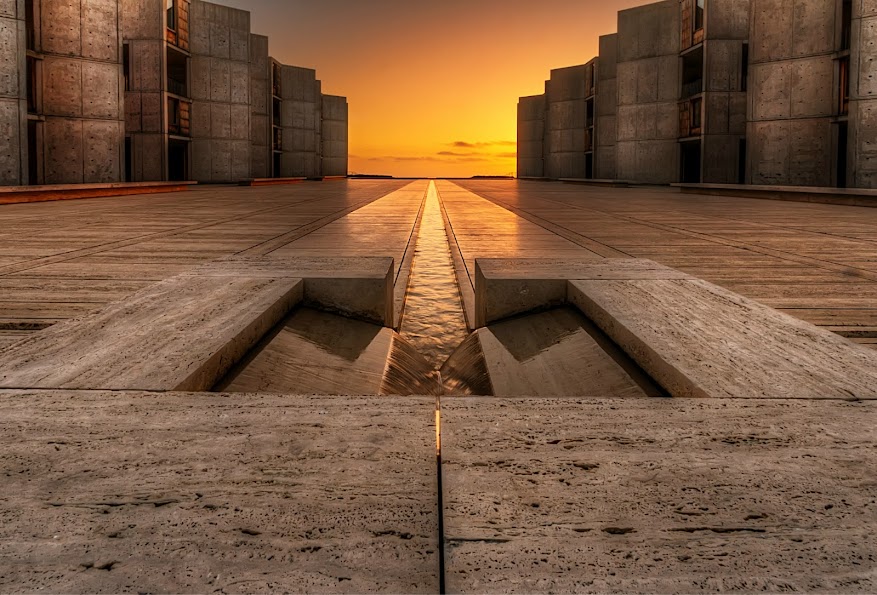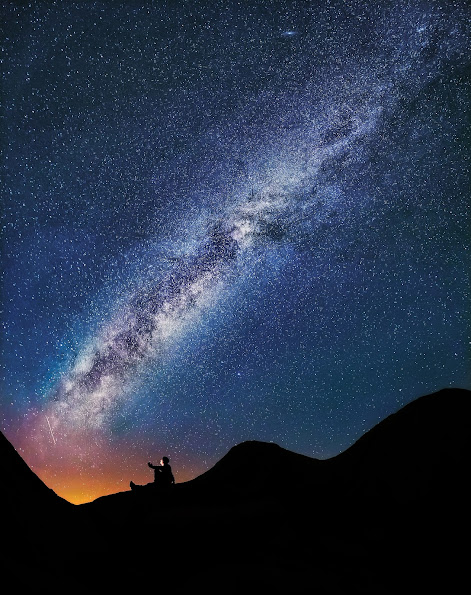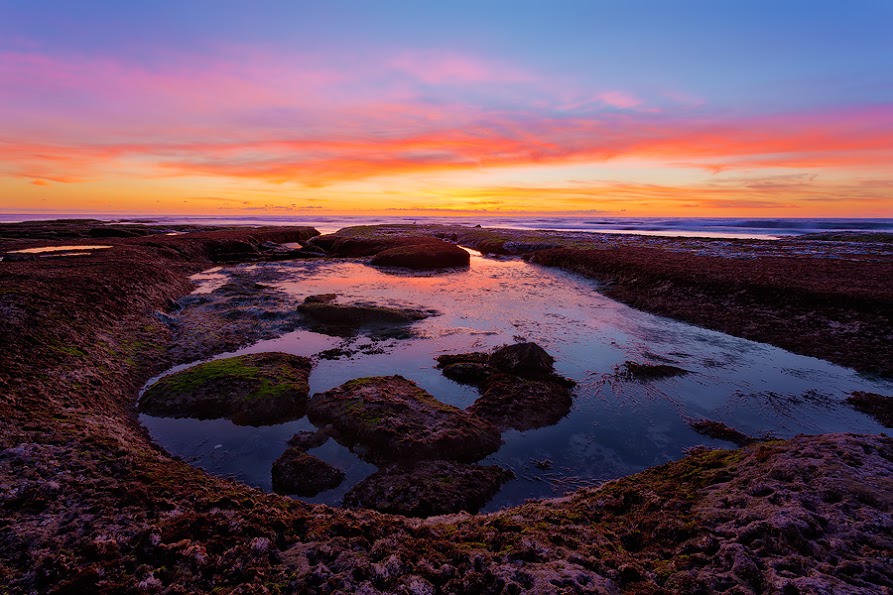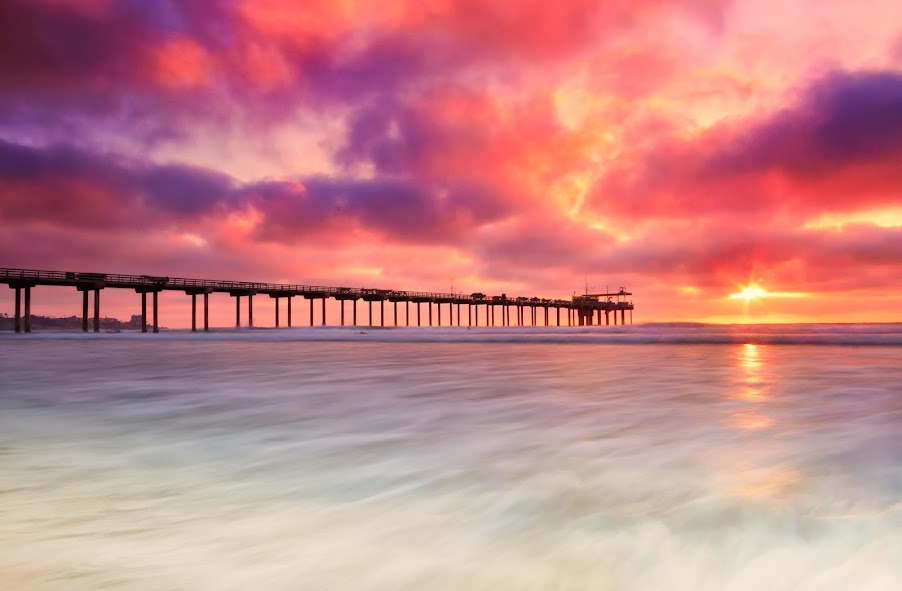 |
| "Eternal Flux" © Sairam Sundaresan |
A couple of weeks ago I posted a pseudo-tutorial on textures and said how textures can turn a landscape shot into a "story-telling" shot by evoking a different set of emotions. This reminded me a of a great photographer I met through G+, Sairam Sundaresan, and his G+ mentorship titled Storytelling Landscape Photography.
Sairam's work is outstanding and mind-blowing, and if you haven't seen it already, you should. Last year, Sairam won 12 Honorary Mentions at the prestigious International Photography Awards, and this year he was just recently awarded First place in the PX3 2014 contest in the Nature/sunset category with his image "Apocalypse". That's why I'm so excited to have Sairam here at the blog today, to share a few tips and secrets about his work. Welcome, Sairam!
 |
| "Apocalypse" © Sairam Sundaresan |
EEG: Tell us a bit about your background and how photography has become your passion.
SS: Well, I'm basically an engineer by day and a photographer by night. Growing up by the coast, I'd often visit the beach. The cool waves, the colorful sky, and the glowing sand used to excite me every single time I went there. My parents had a nice kodak camera when I was a kid, and I used to play around with that. Given that it was a film camera, I'd have to be careful with how many shots I took before a new roll was needed (I ended up using a lot of it!). Rest assured all the family portraits I took had the background landscape in sharp focus and my family all blurry. Little did I know then that I would pursue landscape photography as a serious passion. In college, all my friends jumped onto the DSLR bandwagon. I didn't quite know what the fuss was about, but I saw their pictures and wondered how they managed to get such high quality images. Without a second thought, I invested in a Canon Rebel Xs, and started pressing all the buttons on it. At first, all I did was shoot in one of the auto modes. While the pictures I took looked nice, I didn't quite feel happy about them. There wasn't this sense of "creation". One fine day in late 2011, I decided to switch to manual mode, and there started the journey. I made a ton of mistakes, but never stopped shooting. I used to pore through blogs, videos, and books on photography and glean as much as I could. Somehow, reading was never as good a teacher as actually going out there and shooting. While looking through my collection of images, I realized that most of my subjects knowingly or unknowingly belonged to the natural world. Fast forward three years, and I have never felt more excited about shooting my next landscape image. I guess nature gives me a sense of peace. When I am out shooting in the wilderness, there's a sense of connection that I experience with the whole world that I quite don't find anywhere else. Alright, I'll stop now before this becomes a novel.
EEG: When you set off shooting, how do you choose the perfect spot? In other words, what factors come into play: angle, light, framing ... ?
SS: I strongly believe in preparation. Mother nature is extremely talented at throwing curve balls at you, so the more prepared you are, the more you can embrace the moment and capture what you experience. With the evolution of technology, we've been blessed with several tools that help us prepare and plan way ahead. If I'm visiting a spot I've been to many times, I first focus on weather conditions. Natural light changes dramatically based on weather, and I try to pre-visualize what kind of light I may have at the scene based on the weather. Say it's the coast that I'm going out to shoot. I look at the tide charts. High tide and low tide offer completely different opportunities. By knowing how the tide would behave, you can have a sense of opportunities that will be available for you. For example, in low tide, you could have the possibility of reflective sand, since the water washes through the sand and recedes. This allows for symmetric compositions where the sky can be seen in the sand. Next, I look at the google maps for directions. If I had a nickel for every time I've lost my way to a scene, I'd be richer than Warren Buffet. Knowing where to park, how much traffic there will be and most importantly how to get to the place will save you valuable time that can be better invested in searching for good compositions. Now if it's a place I've not been to before, I search online for images of that place to see what opportunities are available. I don't try to "learn" compositions from these images that I could use at the scene, but rather get a sense of light direction, foreground elements, etc. I also look at google maps to see how the terrain is to find out more opportunities. At the scene, I like to take my time to find nice compositional elements to incorporate into the shot, so I usually get there ahead of time. Once I've found some interesting opportunities, I wait for the right light. Without good light, even great compositions fall flat. I like to find some elements that tie everything in my shot together. It may be things like colors reflected in the foreground, or shapes that the clouds and the foreground elements share and so on. Most importantly, I believe it's important to keep an open mind while shooting and embrace any opportunity that comes your way. Trust your gut. If there's something that made you stop in your tracks and take notice, there's probably something worth shooting there.
 |
| "Shine on You Crazy Diamond" © Sairam Sundaresan |
EEG: Tell us about the G+ mentorship. I love the idea of story-telling through landscape photography: how do you go about doing that?
SS: Google+ has been a real blessing for me. I've been able to connect with so many world class artists and learn from them. It's a platform where inspiration is available for free. One such artist whom I owe a lot to is Robin Griggs Woods. I got the chance to participate in her mentorship at G+ and my eyes were opened. What really touched me was the fact that Robin taught so many amazing things for free. Look around anywhere else for this kind of knowledge and you'd be asked to pay out big bucks. I felt it was time for me to give back to this nurturing community, and that's when the idea of the "Storytelling Landscape Photography" mentorship came about. I approached Robin with this idea, and she graciously accepted my request to teach. With her guidance, I prepared a 12 week program which covered things from basics to a little more advanced tools in landscape photography. I wanted to make this knowledge available to anyone who was interested, and I didn't want people to go through the same "Search and hit a brick wall" routine that I went through. I put out a post on G+ announcing this mentorship, and nearly 100 people signed up. I had a really hard time culling down the list to 27 people. I also had the help of some amazing friends I "met" during Robin's mentorship in running the actual mentorship. They'd comment, inspire and help out the "mentees" when I wasn't there. In the end, I ended up learning a lot from these amazing people, and they inspired me and my work in a big way. The goal of the mentorship was to provide each participant with the tools to tell a compelling story. Without a story (literally or in a more abstract sense), a landscape image wouldn't have much visual value. I'm delighted to have been able to offer something small back to the community, and hope to offer it again in the near future.
EEG: What do you value more, in-camera work or post-processing? (I'm guessing it's a mix of both.)
SS: You guessed right! :) It's definitely a mix of both. I'd add one more thing to it, "Vision." A great image is an equal combination of Vision, technique in the field and post processing. Knowing what you want to shoot, pre-visualizing an idea really helps focus your energies in the field. Developing a vision is probably more difficult than actually shooting, and processing an image. With the right vision, it's important to capture the scene in the way that will best bring out this vision. For this, proper technique is essential. Ensuring the image is well focused, properly exposed, and has a powerful composition all give you something worth working on in post. Finally, post-processing is just as important as technique. A lot of people say, "I believe in Straight out of Camera shots." Even there, the camera actually does the post processing for you before it saves the jpegs. I really feel that it's in post that you can bring out your true vision of the scene. Learning good post processing can make a good image a great image provided the RAW file you started off with had the first two elements I spoke of. To conclude, I'd like to show viewers how a place 'feels' like and not how it 'looks' like.
EEG: I really love that, the "feels like" rather than "looks like." That's exactly where the creativity comes in, otherwise the camera would be a mere "recorder", instead it's a medium, just like oil paints and watercolors.
Thanks so much for being with us on the blog today, Sairam!
SS: Thanks a bunch for interviewing me Elena!
Check out Sairam's portfolio for more outstanding eye candy, and don't forget to add him to your circles if you're interested in his next G+ mentorship.
 |
| Wishing Well © Sairam Sundaresan |
 |
| Eye of Mordor © Sairam Sundaresan |
 |
| "All Roads Lead Home" © Sairam Sundaresan |
 |
| Big Bay Boom © Sairam Sundaresan |

His images are stunning. He really knows how to capture light and color. That's cool he went from student to teacher and can now share with out photographers.
ReplyDeleteWhoa. Sairam's photos are absolutely breathtaking!
ReplyDeleteWe all have our creative side, but not all of us are writers. Beautiful work :-)
ReplyDeleteAnna from Shout with Emaginette